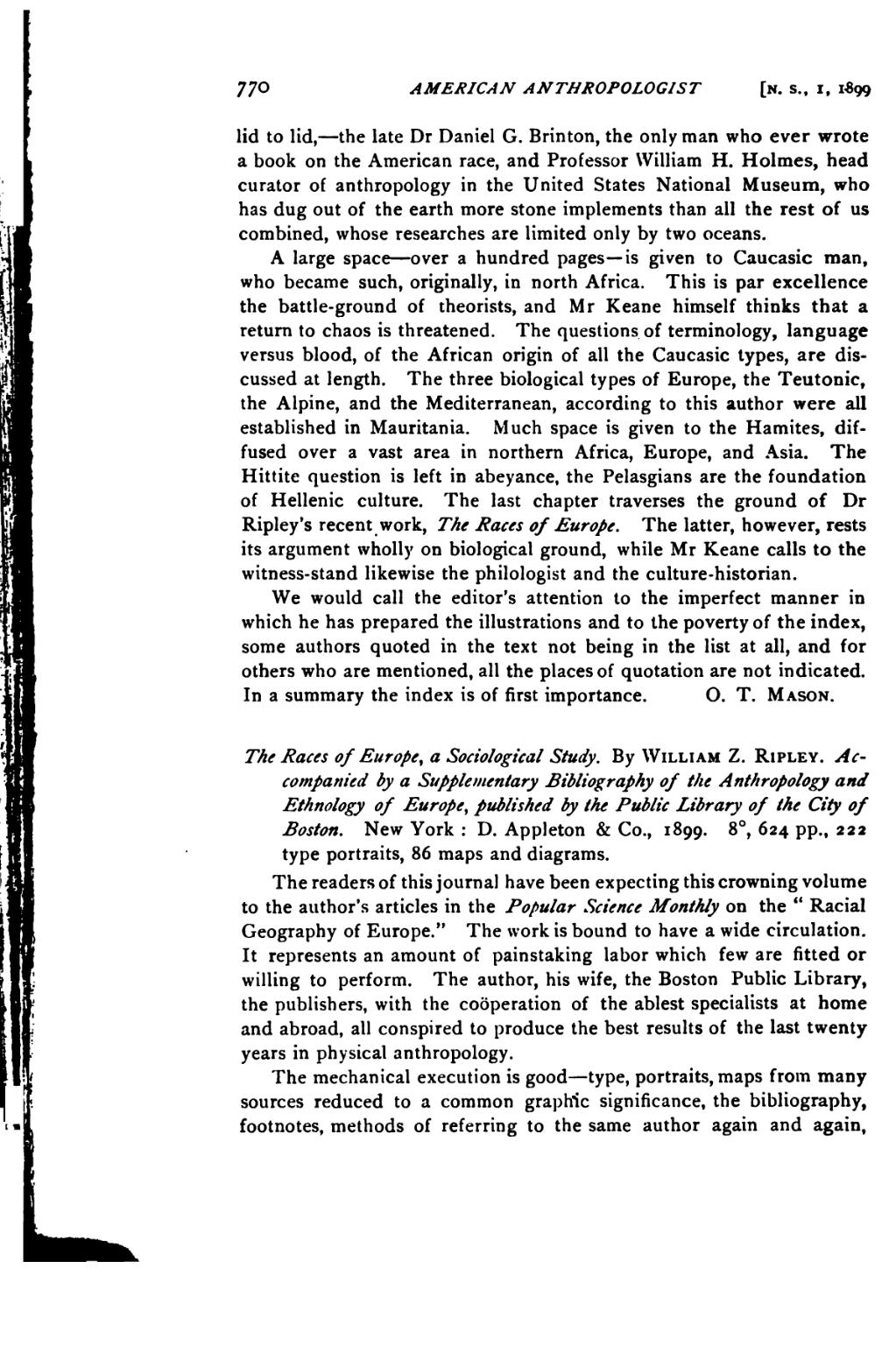770 AMERICAN ANTHROPOLOGIST [n. s., i, 1*99
lid to lid, — the late Dr Daniel G. Brinton, the only man who ever wrote a book on the American race, and Professor William H. Holmes, head curator of anthropology in the United States National Museum, who has dug out of the earth more stone implements than all the rest of us combined, whose researches are limited only by two oceans.
A large space — over a hundred pages— is given to Caucasic man, who became such, originally, in north Africa. This is par excellence the battle-ground of theorists, and Mr Keane himself thinks that a return to chaos is threatened. The questions of terminology, language versus blood, of the African origin of all the Caucasic types, are dis- cussed at length. The three biological types of Europe, the Teutonic, the Alpine, and the Mediterranean, according to this author were all established in Mauritania. Much space is given to the Hamites, dif- fused over a vast area in northern Africa, Europe, and Asia. The Hittite question is left in abeyance, the Pelasgians are the foundation of Hellenic culture. The last chapter traverses the ground of Dr Ripley's recent work, The Races of Europe. The latter, however, rests its argument wholly on biological ground, while Mr Keane calls to the witness-stand likewise the philologist and the culture-historian.
We would call the editor's attention to the imperfect manner in which he has prepared the illustrations and to the poverty of the index, some authors quoted in the text not being in the list at all, and for others who are mentioned, all the places of quotation are not indicated. In a summary the index is of first importance. O. T. Mason.
The Races of Europe, a Sociological Study. By William Z. Ripley. Ac- companied by a Supplementary Bibliography of the Anthropology and Ethnology of Europe, published by the Public Library of the City of Boston. New York : D. Appleton & Co., 1899. 8°, 624 pp., 222 type portraits, 86 maps and diagrams.
The readers of this journal have been expecting this crowning volume to the author's articles in the Popular Science Monthly on the " Racial Geography of Europe." The work is bound to have a wide circulation. It represents an amount of painstaking labor which few are fitted or willing to perform. The author, his wife, the Boston Public Library, the publishers, with the cooperation of the ablest specialists at home and abroad, all conspired to produce the best results of the last twenty years in physical anthropology.
The mechanical execution is good — type, portraits, maps from many sources reduced to a common graphic significance, the bibliography, footnotes, methods of referring to the same author again and again,
�� �
